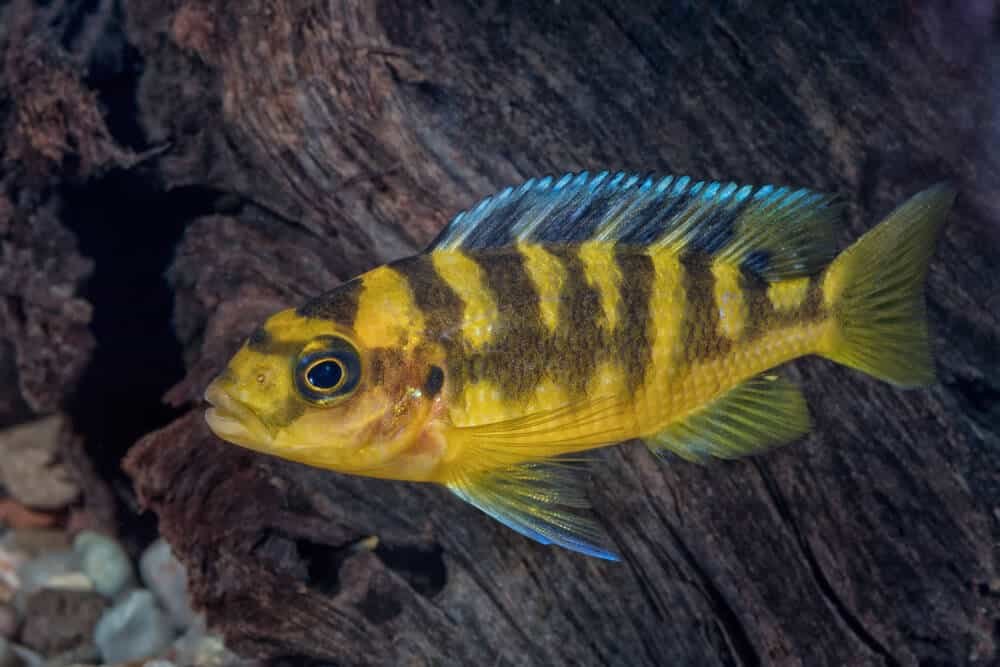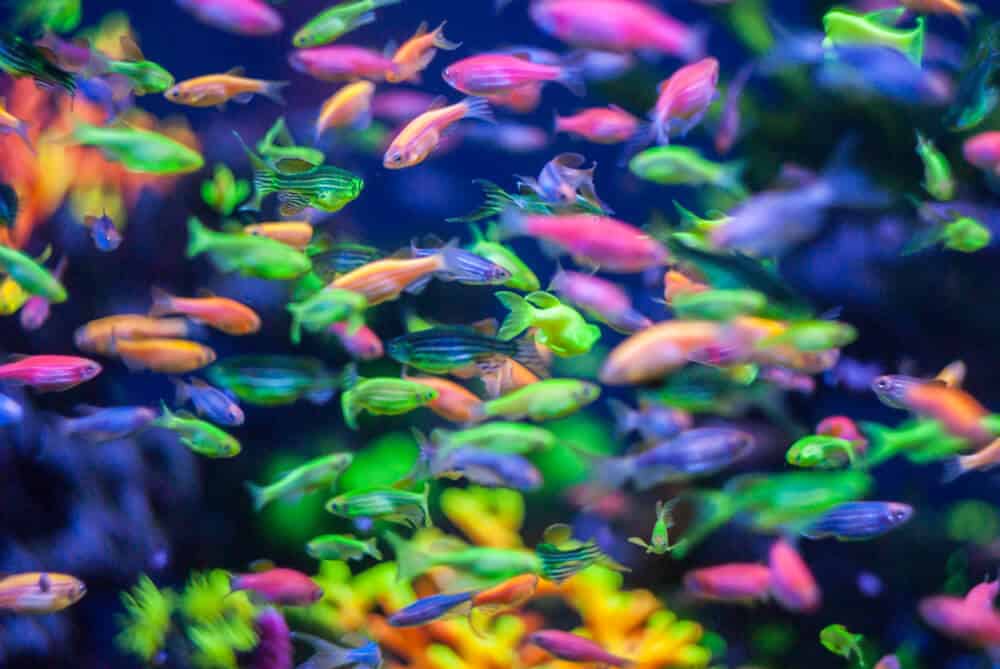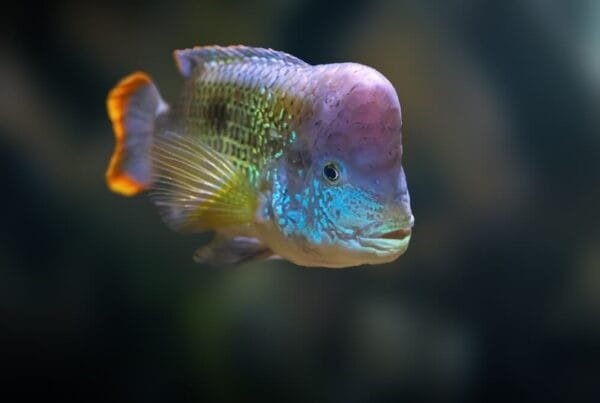So you’ve decided to bring home a beautiful Dwarf Gourami, but now you’re wondering how to create the perfect environment for your new aquatic friend. Well, fear not! Setting up a suitable aquarium for Dwarf Gouramis is easier than you think. From selecting the right tank size to arranging the ideal decorations, this article will guide you through the steps to ensure your Dwarf Gourami feels right at home in its new aquatic paradise.
Choosing the Right Aquarium
Determining the Tank Size
When choosing an aquarium for your Dwarf Gourami, it’s essential to consider the tank size. Dwarf Gouramis prefer spacious tanks with ample swimming room. A suitable tank size for a pair of Dwarf Gouramis would be a minimum of 20 gallons. This size allows them to have plenty of space to swim around and explore. If you plan to keep a larger community of fish along with your Dwarf Gouramis, you may need a bigger tank to accommodate their needs.
Considering Tank Shape
Tank shape is another crucial factor to consider when selecting an aquarium for your Dwarf Gourami. They prefer longer tanks rather than tall ones since they spend most of their time swimming in the middle and bottom levels of the tank. A rectangular tank is the ideal shape, providing them with the optimal swimming space.
Selecting the Material
Aquariums are available in different materials, including glass and acrylic. While both materials have their advantages, glass is often recommended for beginners due to its durability and lower cost. Glass tanks are less likely to scratch and are more resistant to discoloration over time. Acrylic tanks, on the other hand, are lighter and offer better clarity, but they require careful handling to avoid scratches.
Checking for Leaks and Sturdiness
Before purchasing an aquarium, always check for leaks and sturdiness. Inspect the tank for any signs of cracks, chips, or weak seams that could lead to leakage. A leaking tank can cause damage to your Dwarf Gourami’s habitat and potentially harm them. Additionally, ensure that the aquarium stand or surface you choose can support the weight of the tank when filled with water to prevent accidents and injuries.
Setting Up the Aquarium
Cleaning the Tank
Once you have chosen an aquarium, the first step in setting up a suitable environment for your Dwarf Gourami is to clean the tank thoroughly. Use a mild aquarium-safe detergent or vinegar solution to remove any dirt or residue from the tank walls, gravel, and decorations. Rinse everything thoroughly and avoid using any harsh chemicals that may harm the fish.
Adding Substrate
After cleaning, add a suitable substrate to the tank. Dwarf Gouramis prefer a fine-grained substrate, such as sand or small gravel, as they like to occasionally sift through it. Avoid sharp-edged gravel that can injure their delicate fins. Add the substrate evenly to the bottom of the tank, creating a depth of around 2 inches to allow for proper planting and a natural habitat.
Installing a Heater
Maintaining a stable water temperature is vital for the well-being of your Dwarf Gourami. Install a reliable aquarium heater that can maintain a temperature of around 78-82°F (25-28°C), which is ideal for these tropical fish. Keep in mind that Dwarf Gouramis are sensitive to temperature fluctuations, so a heater with a built-in thermostat will help ensure a consistent temperature.
Attaching a Filter
A suitable filtration system is essential to maintain water quality in your Dwarf Gourami’s aquarium. Depending on the tank size, choose a filter that provides adequate mechanical and biological filtration. Canister filters or hang-on-back filters are often recommended for effective filtration. Make sure to prime the filter and follow the manufacturer’s instructions for proper installation and maintenance.
Placing Decorations
Dwarf Gouramis enjoy a well-decorated tank that provides hiding spots and areas for exploration. Select aquarium-safe decorations, such as rocks, driftwood, or live plants, to create a natural and stimulating environment. Ensure that the decorations are securely placed, as Dwarf Gouramis may occasionally dig or move things around. Avoid sharp and abrasive decorations that could injure their delicate fins.
Water Conditions
Maintaining the Temperature
Monitoring and maintaining a stable water temperature is crucial for the health of your Dwarf Gourami. Use a reliable aquarium thermometer to regularly check the water temperature. Adjust the heater accordingly to keep the temperature within the recommended range of 78-82°F (25-28°C). Sudden and drastic temperature changes can stress the fish and make them more susceptible to illnesses.
Controlling Water pH
Dwarf Gouramis thrive in slightly acidic to neutral water conditions. Maintain a pH level between 6.0 and 7.5, with a slightly acidic preference around 6.5. Test the water regularly using a pH test kit or strips and adjust it if necessary. Adding driftwood or using specific pH buffers can help maintain stable pH levels within the desired range.
Monitoring Water Hardness
Water hardness, measured in terms of general hardness (GH) and carbonate hardness (KH), is another important aspect to consider. Dwarf Gouramis prefer a moderate water hardness level, with a GH between 10-15 dGH and a KH between 4-8 dKH. These levels can be achieved through the use of appropriate additives or by using reverse osmosis (RO) water and adjusting it with minerals.
Ensuring Water Quality
Regularly monitoring and maintaining good water quality is essential for the overall well-being of your Dwarf Gourami. Test the water regularly for ammonia, nitrite, and nitrate levels using an aquarium test kit. Perform partial water changes, typically around 25% every week, to remove accumulated waste and maintain proper water parameters. Consider using a water conditioner to remove harmful chemicals such as chlorine or chloramine before adding new water to the tank.
Choosing Compatible Tankmates
Researching Dwarf Gourami Behavior
Before adding any tankmates to your Dwarf Gourami’s aquarium, it’s crucial to understand their natural behavior and compatibility with other fish. Dwarf Gouramis are generally peaceful, but they can become territorial, especially during breeding or if they feel threatened. Research their behavior and temperament to ensure they are compatible with the other fish species you plan to keep.
Avoiding Aggressive Tankmates
Since Dwarf Gouramis are relatively peaceful, it’s essential to choose tankmates that share a similar temperament. Avoid aggressive or fin-nipping fish that may stress or harm your Dwarf Gourami. Aggressive species such as larger cichlids or fin-nippers like Tiger Barbs should be avoided to prevent any conflicts or injuries.
Considering Peaceful Community Fish
Opting for peaceful community fish species that coexist well with Dwarf Gouramis will provide a harmonious tank environment. Some suitable tankmates for Dwarf Gouramis include small tetras, rasboras, small Corydoras catfish, or peaceful livebearers like guppies or endlers. Make sure to research the compatibility and specific care requirements of each potential tankmate to ensure a successful community tank.
Feeding the Dwarf Gourami
Providing a Balanced Diet
To keep your Dwarf Gourami healthy and thriving, provide them with a balanced and varied diet. While they are omnivorous in nature, their diet mainly consists of small invertebrates, insects, and plant matter. Offer high-quality commercial fish food specially formulated for Dwarf Gouramis as their primary diet. Supplement their diet with live or frozen foods like brine shrimp, bloodworms, or daphnia to provide essential nutrients.
Offering Variety in Food
In addition to commercial fish food, offer a variety of foods to mimic their natural diet and ensure nutritional diversity. Consider including vegetable-based foods like spirulina flakes or blanched vegetables such as zucchini or spinach. This variety will help stimulate their appetite and provide essential vitamins and minerals for their overall health.
Avoiding Overfeeding
Feeding your Dwarf Gourami should be done in moderation, as overfeeding can lead to obesity and water quality issues. Offer small portions of food multiple times a day, ensuring that they consume the food within a few minutes. Remove any uneaten food to maintain water cleanliness and prevent the accumulation of organic waste.
Maintaining the Aquarium
Performing Regular Water Changes
Regular water changes play a vital role in maintaining a healthy aquarium for your Dwarf Gourami. Aim to perform partial water changes of around 25% every week. This helps remove excess nutrients, debris, and accumulated waste, ensuring optimal water quality for your fish. Remember to treat the new water with a water conditioner before adding it to the tank.
Cleaning the Tank and Equipment
Regular cleaning of the tank and equipment is essential to prevent the buildup of algae and maintain a clean and healthy environment for your Dwarf Gourami. Use a gentle algae scrubber or soft brush to remove any algae from the tank walls, decorations, and equipment. Avoid using soap or harsh chemicals that can be toxic to fish. Rinse the filter media gently in tank water to preserve the beneficial bacteria.
Monitoring Water Parameters
Consistently monitor the water parameters in your Dwarf Gourami’s aquarium to ensure they remain within the desired range. Regularly test the ammonia, nitrite, nitrate, pH, and water hardness levels using appropriate aquarium test kits. Any significant changes in these parameters can indicate water quality issues or other potential problems that need to be addressed promptly to maintain a healthy environment.
Preventing Common Diseases
Maintaining Good Water Quality
One of the best ways to prevent diseases in your Dwarf Gourami is by maintaining good water quality. Poor water conditions can stress the fish and make them more susceptible to illnesses. By regularly testing the water parameters, performing water changes, and keeping up with proper aquarium maintenance, you can promote a healthy environment and reduce the risk of diseases.
Quarantining New Fish
Introducing new fish to your Dwarf Gourami’s aquarium without proper quarantine can increase the chances of introducing diseases. Set up a separate quarantine tank and keep new fish isolated for at least a few weeks to observe their health and behavior. This period allows you to identify and treat any potential diseases before introducing the new fish to the main tank.
Recognizing Signs of Disease
Being able to recognize common signs of diseases is crucial for early detection and treatment. Look out for symptoms such as changes in behavior, appetite loss, vigorous scratching or rubbing against tank surfaces, discoloration, abnormal growths, or fin deterioration. If you notice any of these signs, promptly isolate the affected fish and seek advice from a reputable fish veterinarian or experienced aquatic professional.
Consulting a Veterinarian
If your Dwarf Gourami shows signs of illness or you’re facing difficulties in diagnosing or treating a disease, it’s best to consult a qualified veterinarian specializing in fish health. They can provide professional guidance and treatment options to address specific diseases or health concerns. Remember, early intervention can greatly improve the chances of successful treatment and recovery for your fish.
Breeding Dwarf Gourami
Creating a Suitable Breeding Environment
Breeding Dwarf Gouramis can be an enjoyable and rewarding experience. To create a suitable breeding environment, introduce hiding spots such as dense vegetation or floating plants like Indian Fern or Amazon Frogbit. Provide a flat surface, such as a spawning mop or leaf, where the male can build a bubble nest for the eggs. Maintain optimal water conditions, including the preferred temperature, pH, and water hardness.
Observing Spawning Behavior
Once the breeding environment is established, carefully observe the behavior of your Dwarf Gouramis. The male will start building a bubble nest, enticing the female with vibrant colors and elaborate courtship displays. When the female is ready to spawn, she will approach the male under the nest, and the male will embrace her to release her eggs. After spawning, remove the female to prevent any aggression from the male.
Separating Eggs and Fry
After spawning, the male will guard the nest and tend to the eggs until they hatch. Once the fry hatch, they will stay near the bubble nest for several days, feeding on their yolk sacs. At that point, it’s essential to remove the male from the breeding tank, as he may become aggressive towards the fry. Provide suitable fry food, such as commercially available liquid fry food or newly hatched brine shrimp, to support their growth and development.
Handling Potential Issues
Addressing Aggression
If you encounter aggression issues between Dwarf Gouramis or with other tankmates, there are a few steps you can take to address the problem. Provide additional hiding spots and visual barriers in the tank to break the line of sight between aggressive fish. Consider rearranging the tank decor to disrupt territorial claims. If aggression continues, you may need to separate the aggressive fish or find alternative tankmates.
Dealing with Fish Illnesses
In the unfortunate event that your Dwarf Gourami falls ill, swift action is necessary. Isolate the affected fish to prevent further spread of the illness. Research common fish diseases and their symptoms to help identify the issue. Depending on the specific disease, treatments may include aquarium salt baths, medicated food, or medication added directly to the water. Consult a veterinarian or experienced fish hobbyist for accurate diagnosis and treatment recommendations.
Resolving Water Quality Problems
Water quality problems can arise for various reasons, such as excessive waste buildup or inadequate filtration. Regularly test the water parameters and perform necessary water changes to maintain optimal water quality. Check the efficiency of the filtration system and ensure it is appropriately sized for the aquarium. If necessary, consider upgrading the filter or increase the frequency of maintenance to resolve any water quality issues.
Conclusion
Setting up a suitable aquarium for your Dwarf Gourami requires careful consideration and attention to detail. By choosing the right tank size, shape, and material, you provide a comfortable environment for your fish. Adhering to proper setup procedures, maintaining optimal water conditions, selecting compatible tankmates, and providing a nutritious diet are key factors in ensuring the health and well-being of your Dwarf Gourami. Regular maintenance, disease prevention measures, and addressing potential issues promptly contribute to a thriving aquarium. With the right knowledge and commitment, you can create a beautiful habitat and enjoy the vibrant colors and fascinating behavior of Dwarf Gouramis in your home.






